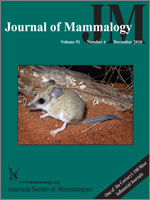The Nearctic has been recognized as a biogeographic region since the 19th century. We analyzed distributional patterns of the mammals inhabiting North and Central America, from Alaska to Panama, to delimit the boundaries of the Nearctic region. We performed 6 optimality analyses, using a grid of 4° latitude–longitude, based on families, genera, species, and combinations of these. The analysis of the matrix with the 3 taxonomic levels yielded better results in terms of the largest number of endemics and the best delimitation of the Nearctic region. We also found 3 patterns—western, eastern, and northern—within the region that coincide partially with previous biogeographic characterizations. Although mammals seem to represent appropriate taxa to delimit this region, we conclude that a more robust delimitation might be obtained by analyzing other plant and animal taxa.
How to translate text using browser tools
16 December 2010
Delimitation of the Nearctic region according to mammalian distributional patterns
Tania Escalante,
Gerardo Rodríguez-Tapia,
Claudia Szumik,
Juan J. Morrone,
Miguel Rivas
ACCESS THE FULL ARTICLE

Journal of Mammalogy
Vol. 91 • No. 6
December 2010
Vol. 91 • No. 6
December 2010
biogeographic provinces
Endemism
mammals
North America
software NDM




